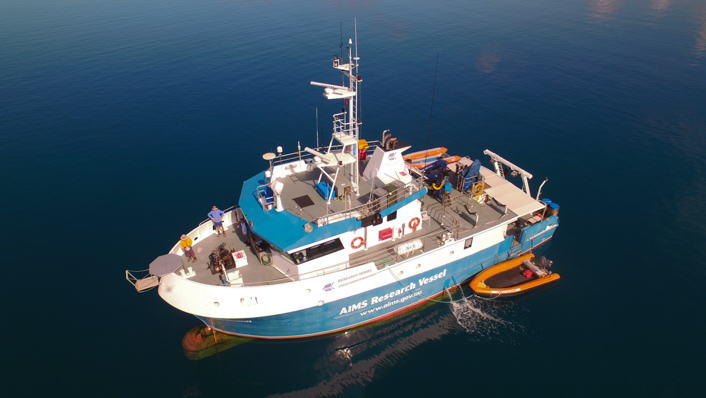The research vessel RV Cape Ferguson is the workhorse for the Australian Institute of Marine Science’s Great Barrier Reef field research program. The ‘Fergie’ (as she is affectionately known) takes marine research to the remote tropical waters of Australia’s north, steaming as much as 15,000 nautical miles, during 270 sea days a year.
The Cape Ferguson provides AIMS with the ocean-going access along the entire Great Barrier Reef to enable marine scientists to develop a comprehensive understanding of this iconic ecosystem’s tropical marine biodiversity, oceanography and functions.
Carrying out research along the Great Barrier Reef and Torres Strait
The Cape Ferguson takes our researchers from the Torres Strait in the north of the Reef, to the Capricorn-Bunker region in the south. The vessel supports AIMS’ Long-Term Monitoring Program, the most comprehensive coral reef monitoring of an ecosystem in the world and essential decision-making data for governments and agencies involved in the management and protection of the Great Barrier Reef.
Many other scientific tasks are carried out on board this “floating laboratory”, such as:
- collecting organisms to support studies on reproduction, husbandry and genetics
- field experiments targeting coral resilience and reef adaption and restoration techniques.
The Cape Ferguson also supports oceanographic research and is a testing platform for technology innovation, and robotics research and development.
Supporting science to underpin Australia’s ‘Blue Economy’
The Cape Ferguson is operated by a crew experienced in science support and conducts an average of 26 expeditions a year. Each voyage carries up to eight scientists lasting between seven and 14 days and travelling up to 3,000 nautical miles (5,550km).
Equipped with a suite of research facilities, including laboratories and deck equipment for deploying high tech instruments, the Cape Ferguson undertakes the science necessary to protect Australia’s tropical oceans and support the sustainability of marine industries underpinning our “Blue Economy”.
The Cape Ferguson is over 20 years old, and will be replaced this decade with a modern research vessel that incorporates hybrid propulsion, better sea-keeping and the latest technology platforms for integrated data collection. This will enable Australia to maintain its position as a global leader in tropical marine science.




